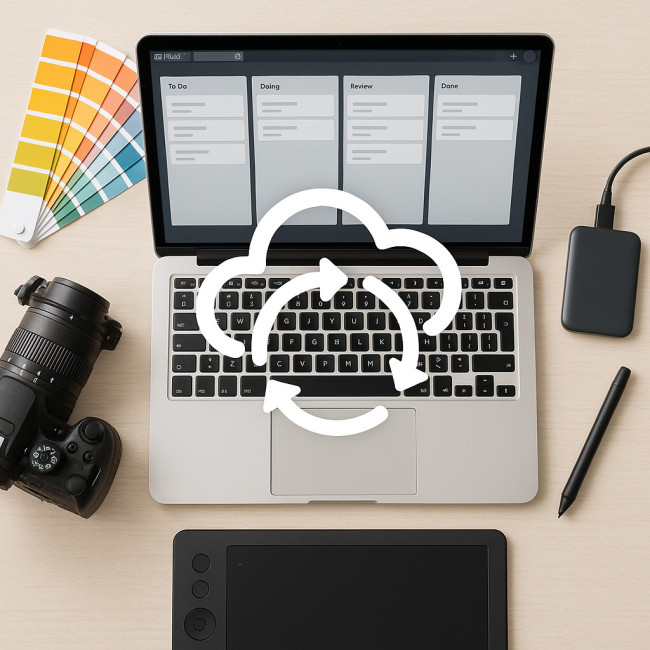Retainer agreements: create steady income and continuity for commercial clients
Tired of riding the feast-or-famine roller-coaster? Retainer agreements transform one-off gigs into predictable monthly revenue while giving brands the creative continuity they crave. Follow this field-tested guide to build, price, and maintain retainers that benefit both sides.
What is a retainer agreement?

A retainer agreement is an ongoing service contract in which a commercial client prepays (wholly or partially) for a set number of hours, deliverables, or outcomes each month. Unlike a framework contract, a retainer locks in recurring work at predefined terms and rates. By converting sporadic assignments into guaranteed monthly collaboration, both parties gain the stability needed to plan resources, budgets, and creative direction well ahead of each campaign cycle.
Typical formats
- Time-based: Client buys a block of hours—ideal for agile photo edits or rolling social assets.
- Deliverable-based: A fixed list such as “20 edited images + 5 reels monthly.”
- Hybrid: Core deliverables plus a flexible hour bank for surprises.
Why commercial clients love retainers
Brands live on deadlines. A retainer guarantees priority access to your skills, consistent visual identity, and reduced admin time. They avoid onboarding new creatives every campaign and lock in budget before the fiscal year begins.
Benefits for creative freelancers
- Predictable cash flow that smooths out seasonal dips.
- Deeper understanding of brand voice, leading to faster approvals.
- Portfolio leverage—long-term partnerships impress new prospects.
- Reduced marketing time; fewer cold pitches mean more billable hours.
Source : Freelancers Union 2023 Report
Key clauses every retainer must include
| Clause | Why it matters | Pro tip |
|---|---|---|
| Scope of work | Avoids “can you just…?” scope creep. | List deliverables plus what is excluded. |
| Availability window | Defines response and turnaround times. | Use business-day language, not hours. |
| Unused hours rollover | Keeps the deal fair in slow months. | Cap rollover to 30–60 days. |
| Revision limits | Prevents endless tweak cycles. | Offer extra rounds at a higher hourly rate. |
| Cancellation notice | Protects you from sudden revenue loss. | Request 30 days minimum. |
Pricing models that protect margin
Anchor your rate to the value produced, not just time spent. Many photographers peg monthly retainers at 80-85 % of their regular hourly total to reward loyalty without eroding profit. Test a three-tier model—Starter, Growth, Enterprise—to upsell once trust is built.
Calculate your floor rate
- Add yearly expenses (gear, insurance, software).
- Add desired net income.
- Divide by billable hours (around 1,000 for freelancers).
- Multiply by 0.8 for retainer discount ceiling.
Need inspiration? Our deep dive on draftsman retainer agreements shows how technical creatives keep margins healthy on year-long projects.
Onboarding a client into a retainer: step-by-step
- Audit current pain points. Ask what delays approvals or inflates costs.
- Prototype a month. Deliver the proposed package once, then debrief.
- Present forecast. Show cost and time savings over six months.
- Draft the contract. Borrow wording from designing author contracts and adapt to visual media.
- Launch with a kickoff call. Outline communication channels and KPIs.
Tools and workflows that scale

Retainers live or die on efficiency. Create client-specific presets, color profiles, and naming conventions. Integrate a shared Trello board and automate asset delivery via cloud folders. Many freelancers swap leads inside collaboration job hubs for photographers to keep workloads balanced across peak seasons, allowing each partner to focus on their strongest creative niche while maintaining consistent turnaround times for every retained brand.
Common pitfalls (and how to avoid them)
- Scope creep: Counter with a change-order form and hourly overage rate.
- Payment delays: Use automatic card billing on the first of the month.
- Boredom: Rotate creative themes quarterly to stay inspired.
- Underestimating workload: Track time for two months and adjust tiers.
- Poor reporting: Send a monthly value recap—metrics beat assumptions.
Looking for parallel revenue ideas? Check out these recurring revenue streams that landscape designers deploy—it's the same mindset, new medium.
Mini-quiz: Are you retainer-ready?
FAQ
- Can I offer multiple clients the same retainer tier?
- Yes, but ensure your total monthly capacity can honor all availability promises.
- Should unused hours expire?
- A rolling window encourages scheduling discipline and protects your calendar. 30–60 days is standard.
- How do I raise prices on an existing retainer?
- Give minimum 60 days' notice, show performance metrics, and add new value to justify the increase.
- Is a legal review necessary?
- Absolutely. A lawyer can flag jurisdiction, liability, and IP clauses you might overlook.
Take action today
List three clients who repeatedly return for rush fixes. Draft a pilot retainer offer, set up an automatic invoice, and schedule a kickoff call. Secure that steady income stream before your next slow month sneaks up.











